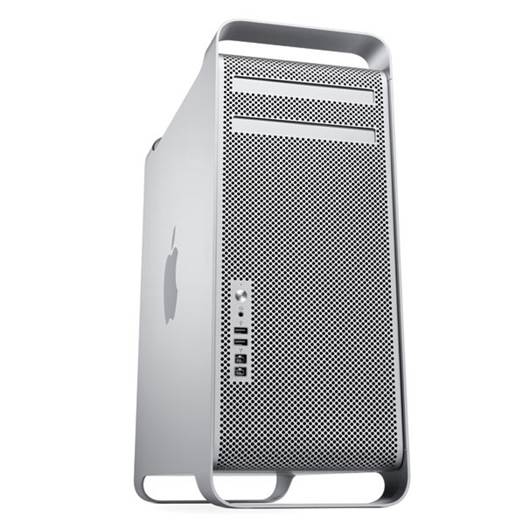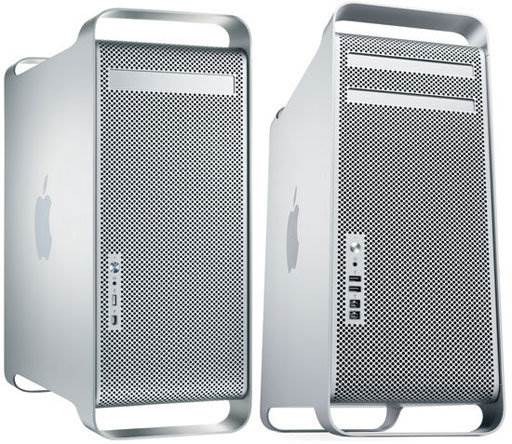Apple promised that it’s working on
something ‘really great’. So what can we expect from the new Mac Pro?
Back in June 2012, Apple attracted
criticism and concern after it made a minor update to the Mac Pro. In response,
CEO Tim Cook promised that new models would be announced in 2013, so we know
something is on its way.
A likely release date and venue would be at
the company’s annual worldwide developers conference (WWDC) set to start on 10
June. Previously, the event tended to have a pro focus, though in recent years
it’s been taken over by the iPad, iPhone and iOS. Hopefully, this month we’ll
get back to the Mac.

The
Mac Pro isn’t a high-powered consumer computer – it isn’t even a business
machine
But should we expect a Mac Pro at the
developer show? Does Apple care about its workstation? Indeed, does anyone care
about it anymore? Over the past few years, the traditional Mac Pro customer has
opted for an iMac, or a non-Apple alternative that’s cheaper, updated more
frequently and has similar or better – levels of software support. Apple, on
the other hand, has pursued the highly profitable consumer market.
The Mac Pro isn’t a high-powered consumer
computer – it isn’t even a business machine. It’s a tower system for
professionals who like adding things to their computer: new graphics cards,
hard drives, and so on. It offers Hyper-Threading technology for up to 24
virtual cores, has ports galore and can pack up to 64GB of RAM.
The typical market for Apple’s professional
system is 3D mechanical design, engineering simulation, animation studios and
video production houses. Over the years, the Mac Pro had risen in popularity
with this group, only to fade as it failed to keep up with the times. Can Apple
win the professional Mac user back, or is this group of users now lost to
it?
Today’s Mac Pro
Apple last updated the Mac Pro at WWDC
2012. However, the introduction of this ‘New’ model resulted in a lot of
criticism, led by Andy Herzfeld (a member of the original mac development
team), and a Facebook page, MacProsPlease, was set up by a freelance
editor/animator to plea with Apple to address the issue.

“Still
no Thunderbolt, still no USB 3.0, no SATA III or Ram speed improvements – it
seems like it’s stuck in time in 2010.”
In response to fears it was abandoning the
Mac Pro, Tim Cook promised that a new model would be released in 2013. In an
email to one concerned Mac Pro user, he wrote: “Our pro customers like you are
really important to us. Although we didn’t have a chance to talk about a new
Mac Pro [at WWDC], don’t worry as we’re working on something really great for
later next year.”
Apple had launched two versions (along with
various build to order options and a Server model): one with a 3.2GHz, quad-core
Intel Xeon chip, with 6GB of Ram; and a high-end model with two 2.4GHz,
six-core Xeon processors and 12GB of Ram. Both have a 1TB hard drive and AMD’s
Radeon HD 5770 graphics cards.
As noted by Herzfeld, there was: “Still no
Thunderbolt, still no USB 3.0, no SATA III or Ram speed improvements – it seems
like it’s stuck in time in 2010.” The top-end graphics option is a pair of 2009
ATI Radeons – that cost around $150. It’s no wonder Mac Pro users were
concerned. In fact, it’s now almost three years since Apple last really updated
its Mac Pro (July 2010, when it introduced SSD and 12 core options).
Banned in Europe
It hasn’t helped matters that apple has
been forced to stop selling the Mac Pro in Europe. An amendment to a safety
regulation left the professional Mac incompliant with EU law and the company had
no choice but to stop shipping the Mac Pro to European countries on 1 march.

The
Mac Pro’s design has hardly changed in 10 years as you can see from these
images
Apple told Macworld the amendment to the
IEC 60950-1 regulation increased requirements around electrical port protection
and the fan guards in the system. It added it still considers the Mac Pro to be
a safe and reliable product, so if you own one there’s no need to panic.
At issue are the Mac Pro’s large fans.
Because they are unprotected, it would be possible to touch the fan blades.
According to apple, the new requirements necessitate fan guards and some
increased protection on the ports on the electrical system.
To comply with these safety regulations it
will have to make some internal changes to the machine, though we hope to see
more than fan guards in the new model. For starters, the aging Mac could do
with a bit of a facelift.
Its design hasn’t changed in a decade. The
only difference between the case of the Power mac G5 launched in 2003 and
that of the current Mac Pro is a few extra ports and a second optical drive.
The presence of two optical-drive slots demonstrates just how old the current
Mac Pro design is.
In terms of technology design, 10 years is
equivalent to the time between the Triassic and cretaceous periods. Some key
changes that have happened over the past 10 years include:
·
Components are much smaller and more efficient,
so take up less space
·
Input/ Output is now much faster (Thunderbolt
and USB 3.0) making external components as viable and easier to use than
internal upgrades
·
Optical technology (DVD-Rom) is being put out to
pasture, and drives are being removed from most newer computers
·
SSD Flash has replaced/augmented traditional
hard drives
·
RAM is integrated with the motherboard
·
Wireless technology
The result is smaller and thinner computers.
Indeed, you only need to take a look at the Macbook air and latest iMac to see
this in action.